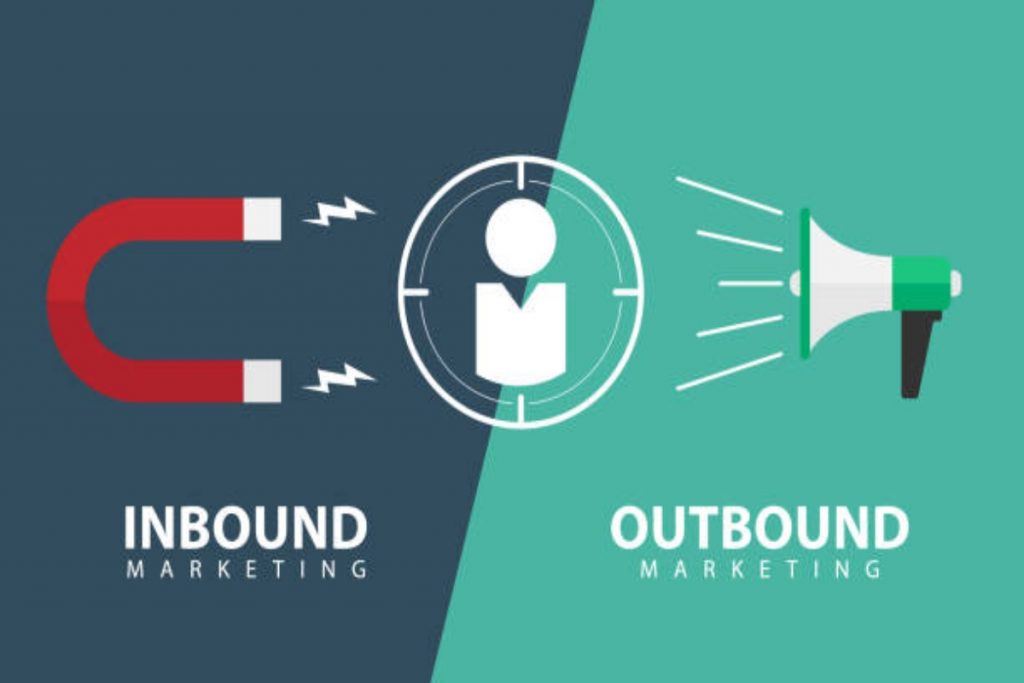Developing a prospective marketing strategy for your company can prove to be quite overwhelming if you do not have the right experience or information . Unless you have hired an experienced and professional B2B marketing agency to plan the road ahead for you, there could be too many roadblocks to handle. The first challenge indeed is to identify which strategy to use between inbound and outbound marketing.
Two of the most common overarching marketing strategies – inbound and outbound marketing – each has its own set of applications, benefits and challenges. There are several key differences between the two strategies in terms of the above, which form the base for deciding what to use when marketing your business.
Table of Contents
Inbound Marketing
The strategy of inbound marketing involves creating content and social media tactics that spread that foster brand awareness to direct people to the brand’s digital platforms – websites, social media pages, and so on –so that they develop an interest in their products and can eventually make a purchase.
Experts prefer to call inbound marketing strategy as “magnetic”, which targets the most relevant audiences and disseminates your brand’s message to them for the best results. The idea is to cater the message to those who are actively looking for solutions, so that they can take immediate action.
Content and message are at the heart of inbound marketing, which can be in the form of textual, image, video and downloadable content, such as eBooks, guides, white papers, tip sheets, and so on. the strategy of inbound marketing involves familiarizing the audience with potential solutions for their challenges, driving them to the sales funnel, and then turning them into buyers.
Benefits of Inbound Marketing
There are several benefits associated with inbound marketing for businesses that seek to influence targeted audience pools for their products and services, some of which have remain highlighted below.
- Inbound marketing might remain targeted but is not invasive. Audiences always have the option to engage or not to engage with your content online, depending on whether they are looking for a solution, how relevant and well-distributed your content is, and so on.
- Inbound marketing content is well-rounded and educational, which takes into account the various stages of the sales funnel and remains designed to suit each accordingly.
- The Inbound marketing is measurable throughout, allowing businesses and marketing managers to gauge the impact of their marketing initiatives using a metric that gets monitored over time.
- Inbound marketing brings in qualified leads over time, as it remain specifically focussed on the most relevant target audiences, and gets constantly remain updated in terms of content and research.
Outbound Marketing
Outbound marketing, on the other hand. Involves proactively reaching out to a larger customer base using non-digital content with the motive of capturing their attention. Unlike inbound marketing focus is on problem-solving and targeted audience pools. The focus here is on selling products using “interruption” and “push” tactics.
The idea is to send out the message to as large an audience pool. As possible with the intent of making a sale. Various mediums remain used for outbound marketing, generally non-digital, including print, television. And radio advertisements, cold calling, direct and mass emails, and so on.
You can view outbound marketing as a one-way conversation that simply disseminates all the great things about the product. And why the audience should buy it. Leaving the latter to grab its relevance if they relate to it. Outbound marketing is the traditional way of marketing that has been around for quite some time now. And still continues to be relevant, though to a lesser extent.
Benefits of Outbound Marketing
Despite the gradual outmoding of outbound marketing considering the digital age we live in; the strategy does come with its own set of perks that we cannot overlook. These include:
- Outbound marketing plays a key role in promoting brand awareness since remain
- common, remain untargeted message is sent out to large pools of people who haven’t heard about you. Your products or services before.
- The Outbound marketing may yield faster, even instant results. Such as through cold calling, because the idea is to ask people to take immediate action
- Outbound marketing is the traditional form of marketing, which means people are most accustomed to and prepared for it. They may even trust a television ad much more than a social media post talking about the same thing.
Which Strategy to Use between Inbound and Outbound Marketing
Despite their several advantages, both inbound and outbound marketing come with their own set of challenges. While inbound marketing requires continuous maintenance, time and effort, outbound marketing might not come across as appealing or effective. Considering that people may avoid advertisements, calls and emails entirely if they want to. It is best to gauge where you stand in terms of your marketing initiatives. And plans and what your ultimate goals are.
At the last. Both inbound and outbound marketing need to evolve with the changing landscape of business in the current climate. Both are extremely powerful marketing strategies in their own right. And depending on whether you want to send out the message to a smaller pool or a larger base. You can choose the best fit for your campaign with a little expert guidance.
The real challenge is to keep abreast with the latest market developments. And the audience’s dynamic needs to stay ahead in the run.

